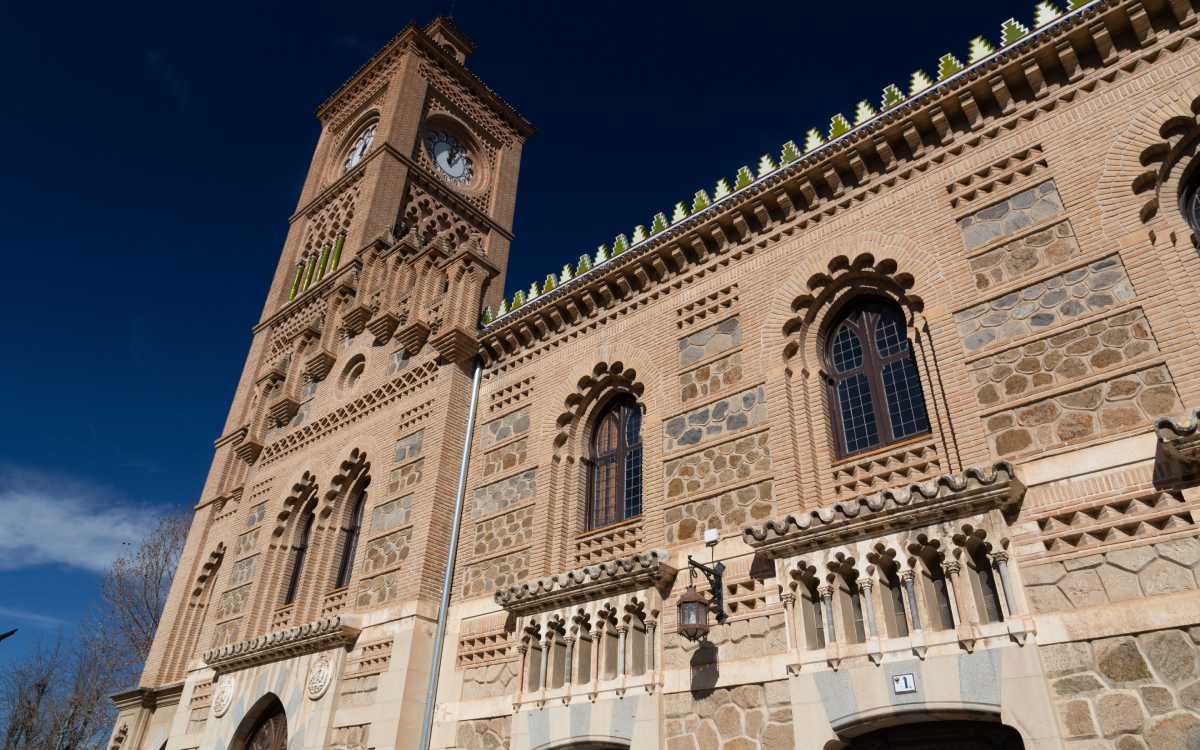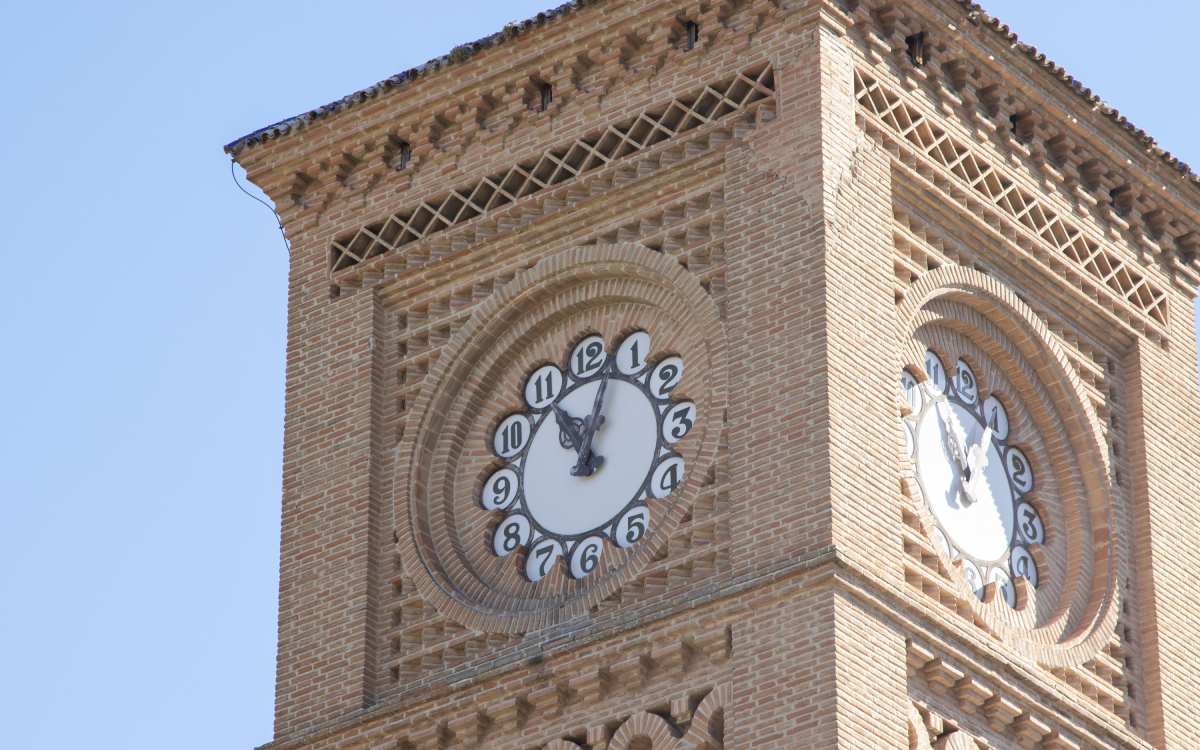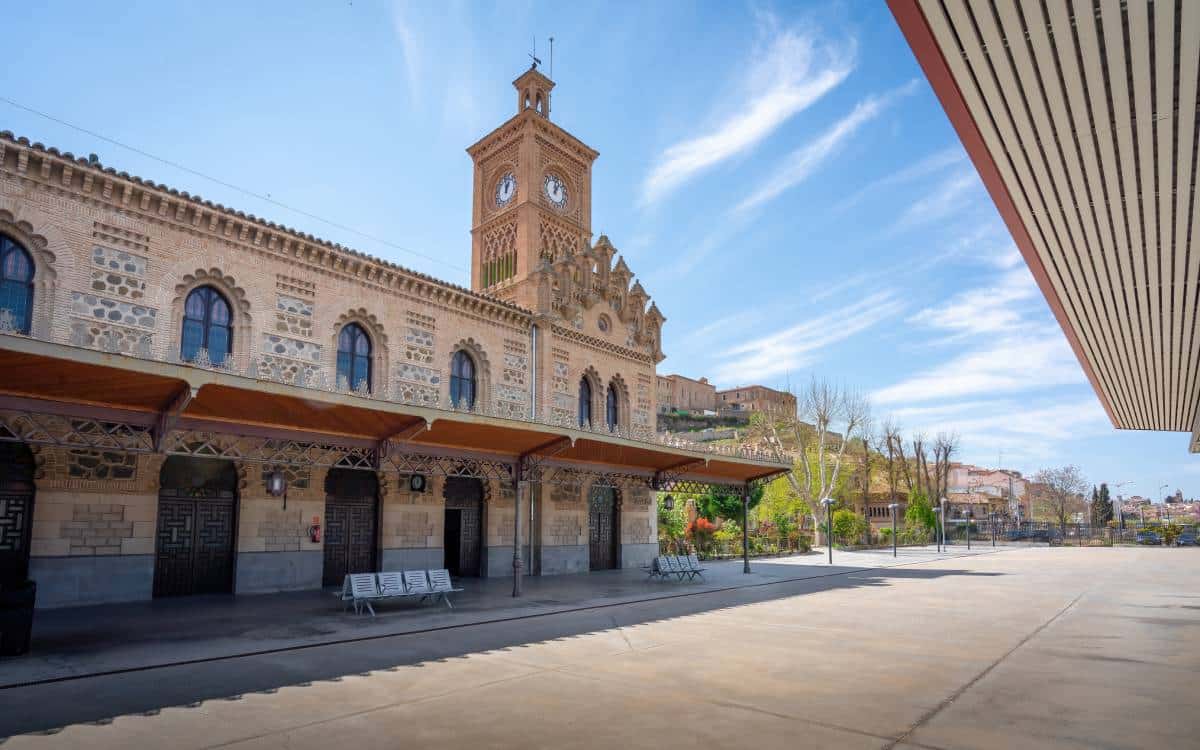
Nobody has ever captured Toledo’s soul and essence like El Greco did. He was so seduced by this city that he preserved it forever in some of its works. A magnificent tower can be seen in the background. It’s the cathedral, which is still one of the most striking parts of the city skyline, besides the Alcázar’s and the more modest towers of the Santo Tomé and San Miguel churches. A more recent tower, but equally beautiful as the others, charms everyone who sees it so much that it has been compared to the most popular London symbol: the Big Ben.

The ‘Spanish Big Ben’. | Shutterstock
If you want to find the tower that has earned the nickname of the ‘Spanish Big Ben’, you shouldn’t look for it in Toledo’s labyrinthine medieval heart. It lies at its foot, on the other side of the old Puente de Alcántara. Many people who visit the capital of Castilla-La Mancha find it by chance, and most of them learn about it in that moment. But once you look at it, you need to stare at it and take a moment to appreciate this building.
This gem rises high in one of the most beautiful train stations in Toledo. It’s the clock tower of the railway station in this capital city. There is no doubt that it is much more modest than London’s tower, but it will take your breath away anyway. Not only will the tower surprise you, but the whole complex will: it’s a centenary (but modern) station that has welcomed every visitor who arrives by train since 1919.

Clock tower of Toledo’s train station. | Shutterstock
Toledo’s modest clock tower has a height of 30 metres, but it is still far from reaching the cathedral, with more than 90 metres of height, and the true Big Ben. But it has enough characteristic elements to be unique in the world. In fact, it wasn’t common for train stations to have a clock tower by the time of the tower’s construction—only civil and religious noble buildings had one.
However, every train station should have this object that indicates the time, something Narciso Clavería knew perfectly. He was the architect who worked on this project and decided to turn the tower into the most important element of the building. It is similar to a lighthouse and has four clock faces, one on each side of the tower. Some features might remind you of the Big Ben, but its style is very different from the Neo-Gothic of the London tower. It’s more similar to another style that is popular in Toledo: Mudéjar.

Details of the clock tower. | Shutterstock
The clock tower of Toledo’s train station is an elegant example of Neo-Mudéjar architecture that perfectly combines bricks, ceramic glaze, and stone, but only at its base. Its lavish decoration includes cusped arches, which sometimes intertwine with each other, and very detailed ornamental friezes. The tower can be crossed through the lower horseshoe arches to access the train platforms. The upper part, crowned by a colourful roof, holds the above-mentioned four clock faces, which are more than 3 metres in diameter.

Toledo’s train station hall. | Shutterstock
The tower rises by the main building’s side, adding the final touch of elegance to a complex that is, in fact, a small architectural treasure. Five picture windows face each other from each main wall, allowing the sun into a hall of exquisite decoration that, ironically, invites us to forget the clock.
There are many elements to look at in this room. The artesonado, the ceramic mosaics of the baseboards, the forged steel lamps, the ticket office’s latticework, the tiny crenelated cornice, and the masonry of its lower part: everything was designed to create a unique complex. These small masterpieces that compose one of the most singular places in Toledo that most people don’t know about were actually created by renowned artisans.

Outside of Toledo’s train station. | Shutterstock
Toledo’s train station was inaugurated in 1919, but the train had already made its way to Toledo long before, in 1858. However, every monumental city needs a majestic train station. For this reason, a new station was commissioned to the architect Narciso Clavería. Since times change and the station has to be modified to suit new needs, it has experienced many important modifications in its more than 100 years of history.
The first one took place in the late 1980s, with the intention of enlarging the platforms and repairing the tower, damaged by a howitzer from the Spanish Civil War. With the arrival of high-speed rails, a second remodelling was scheduled. This work also included the maintenance of the building, one of Toledo’s many treasures, which was declared a Bien de Interés Cultural in 1991.
You can also read this article in Spanish here.
Follow us on Facebook!